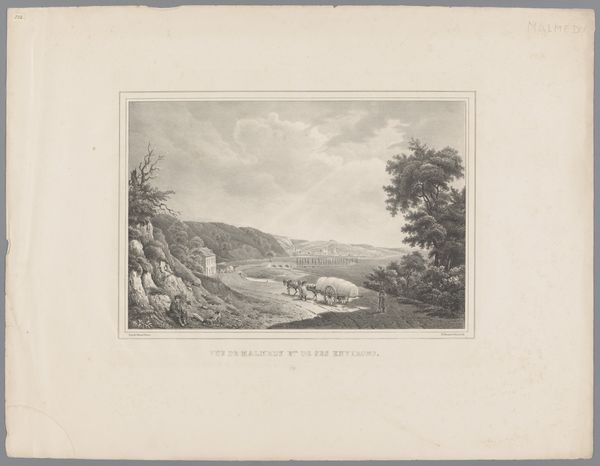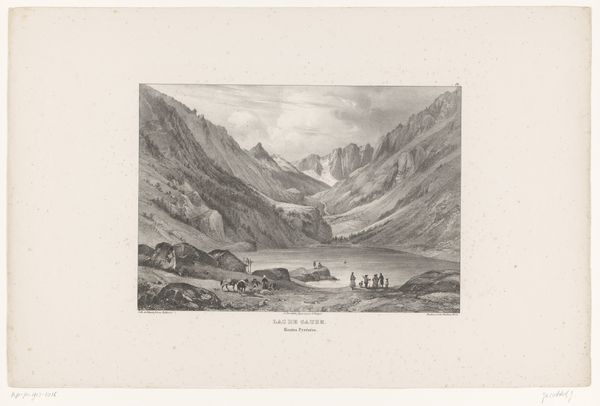
drawing, print, engraving
#
drawing
# print
#
landscape
#
river
#
romanticism
#
engraving
Dimensions: height 363 mm, width 552 mm
Copyright: Rijks Museum: Open Domain
Paulus Lauters rendered this view of the Meuse River at Poilvache using lithography. This printmaking technique, developed in the late 18th century, allowed for the relatively quick and inexpensive reproduction of images. The process involves drawing an image with a greasy substance on a flat stone or metal plate, then treating it with chemicals so that ink adheres only to the drawn areas. Consider how the lithographic process enabled a wider distribution of landscape views like this one, influencing popular perceptions of nature and place. The soft, grainy texture characteristic of lithography lends a gentle, atmospheric quality to the scene, inviting the viewer to imagine themselves in this idyllic setting. In contrast to the rapid reproducibility afforded by lithography, notice the amount of labor that went into the landscape scene itself, from the hard labor of mining the rocks that built the fortress to the transportation and trade happening on the river. By appreciating the means of production behind this artwork, we can better understand its place within broader social and cultural contexts, challenging any strict divide between art, craft, and industry.
Comments
No comments
Be the first to comment and join the conversation on the ultimate creative platform.













